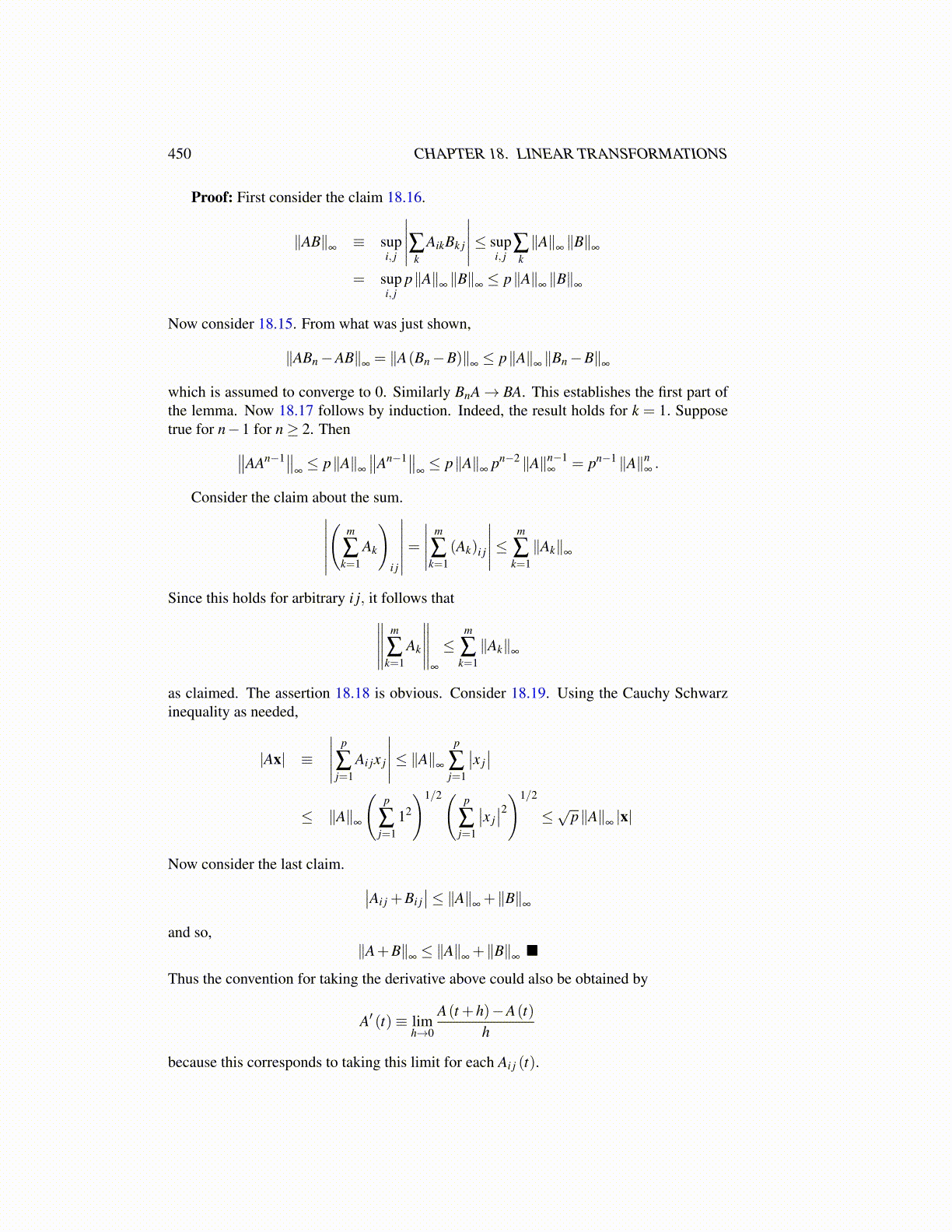
450 CHAPTER 18. LINEAR TRANSFORMATIONS
Proof: First consider the claim 18.16.
∥AB∥∞≡ sup
i, j
∣∣∣∣∣∑kAikBk j
∣∣∣∣∣≤ supi, j
∑k∥A∥
∞∥B∥
∞
= supi, j
p∥A∥∞∥B∥
∞≤ p∥A∥
∞∥B∥
∞
Now consider 18.15. From what was just shown,
∥ABn−AB∥∞= ∥A(Bn−B)∥
∞≤ p∥A∥
∞∥Bn−B∥
∞
which is assumed to converge to 0. Similarly BnA→ BA. This establishes the first part ofthe lemma. Now 18.17 follows by induction. Indeed, the result holds for k = 1. Supposetrue for n−1 for n≥ 2. Then∥∥AAn−1∥∥
∞≤ p∥A∥
∞
∥∥An−1∥∥∞≤ p∥A∥
∞pn−2 ∥A∥n−1
∞= pn−1 ∥A∥n
∞.
Consider the claim about the sum.∣∣∣∣∣∣(
m
∑k=1
Ak
)i j
∣∣∣∣∣∣=∣∣∣∣∣ m
∑k=1
(Ak)i j
∣∣∣∣∣≤ m
∑k=1∥Ak∥∞
Since this holds for arbitrary i j, it follows that∥∥∥∥∥ m
∑k=1
Ak
∥∥∥∥∥∞
≤m
∑k=1∥Ak∥∞
as claimed. The assertion 18.18 is obvious. Consider 18.19. Using the Cauchy Schwarzinequality as needed,
|Ax| ≡
∣∣∣∣∣ p
∑j=1
Ai jx j
∣∣∣∣∣≤ ∥A∥∞
p
∑j=1
∣∣x j∣∣
≤ ∥A∥∞
(p
∑j=1
12
)1/2( p
∑j=1
∣∣x j∣∣2)1/2
≤√p∥A∥∞|x|
Now consider the last claim. ∣∣Ai j +Bi j∣∣≤ ∥A∥
∞+∥B∥
∞
and so,∥A+B∥
∞≤ ∥A∥
∞+∥B∥
∞■
Thus the convention for taking the derivative above could also be obtained by
A′ (t)≡ limh→0
A(t +h)−A(t)h
because this corresponds to taking this limit for each Ai j (t).